This analysis is the fifth article of a six-part series on the Eastern Mediterranean, which provides an overview of the Israel-Palestine conflict from 2000-2020, in order to establish an understanding of the current events unfolding in the region. The other parts of this series deal with the historical background, the socio-economic challenges, the Arab Uprising, the Syrian Civil War, and the “problematic” triangle: Turkey, Cyprus, Greece.
While the entrance of the 21st century signalized a shift from a preexisting unpredictability to a new period of stability for the rest of the international system, a similar development did not occur in the Eastern Mediterranean. As Florence Gaub perfectly summarizes, “[the] Eastern Mediterranean is currently at the epicentre of regional upheaval; the last five years have unfolded in the most unpredictable manner, which raises concerns about the five years to come” (ELIAMEP, 2016: 21). Over the last decades, the region has been the stage of large-scale phenomena accompanied by high political unrest, degradation of socio-economic conditions, and the rise of violence. These shifts have created new security threats, proxy wars, and domestic conflicts that have challenged not only the regional authorities but also the international community. Furthermore, the previously existing “status quo” among the states has been disrupted either by expansionist policies of some political leaders and regional conflicts, or the influence of third states and superpowers. However, what renders the situation in the region especially volatile is the interaction and the deep historical roots of the majority of the regional issues. The combination of these factors constitutes their resolution particularly difficult, hence contributing negatively to their persistence and intensification.
After the presentation of the historical background of the Eastern Mediterranean states, the forthcoming parts aim to present the issues and events that have determined the development of the region in the last twenty years. Contrary to the first part, the analyses of the following articles do not focus on the states, but instead, attempt to shed a light on the present numerous, and complicated issues that the region is confronted with. The rationale behind this decision is that contemporary matters and challenges have transcended the national borders, thus rendering a state-centric study limited and narrow. For this reason, the following articles in this series briefly examine a) the socio-economic background evolution of the region, b) the 2010/11 Arab Spring; c) the ongoing Syrian Civil War; d) the Israel-Palestine conflict in the last twenty years; e) the competition of Cyprus and Greece with Turkey. While these are not the only issues the Eastern Mediterranean states are currently facing, they provide a good understanding of the current problems in the region and starting points for further research. This present analysis will unpack the Israel-Palestine conflict over the past 20 years.
The Israel-Palestine conflict from 2000 to 2020
Contrary to the Syrian Civil War, the Israel-Palestinian conflict is a long-standing issue in the region that has been pivotal for the understanding of the region’s development and the existing power relations. In a similar manner to the previous analysis and presentation of the first 50 years of the conflict that has been the most volatile (the dispute is much older, but the popular starting point is considered the establishment of the state of Israel in 1948), this analysis focuses on the last twenty years – following the assassination of Yitzhak Arabin in 1995, the ascendancy of the Likud government, and the failed Camp David conference in 2000, which was just a manifestation of the unwillingness of both sides to yield to the opposition. Apart from that, it was also a demonstration of Western inability to understand the roots of the conflict and the demands of both Israel and Palestine (mostly the latter). While Bill Clinton blamed Arafat for the collapse of the summit (Birnbaum, 2011), he showed disregard towards Palestinian demands and oblivion to the historical development of the dispute. Putting it simply, a material solution (as complicated and thorough as it might be) is not capable of erasing the ideological prejudice and hate of centuries. At the same time, Palestine is not a coherent and organized state. What this means is that Arafat and other leaders of Palestinian groups are not an absolute representation of the will of the people, hence making the singing of an agreement not applicable and not accepted by each Palestinian. The dismissal of these two factors by foreign powers enhances the difficulty of the resolution of the issue while making the institutional approach not possible and feasible.
Going back to 2001 and specifically to the Taba Summit in Egypt, Israel and Palestine found themselves again at the negotiation table. Despite the common state of progress and some positive steps, still no consensus was achieved. The following year (2002) was of great importance for the progress of the dispute for several reasons. Firstly, in September, the European Union, Russia, the United Nations, and the United States (which at the same year had condemned Arafat as an insurgent element) presented a hasty, banal, and failed peace proposal that aimed to set a common base for further negotiation, while avoiding the big issues, such as the fate of Jerusalem or Israeli settlements (Brecher, 2017). Still, on 12 March 2002, the UN Security Council passed Resolution 1397, “affirming a vision of a region where two states, Israel and Palestine, live side by side within secure and recognized borders” (UNSC, 2002). Secondly, in the same month, the Crown Prince Abdullah of Saudi Arabia at the Beirut Summit came up with an Arab oriented Peace initiative. Contrary to the Road Map for Peace, it offered a wholistic solution that proposed the return of borders to the pre-1967 period and the full normalization of relations with Israel, in exchange for the withdrawal of its forces from all the occupied territories and the recognition of an independent Palestinian state with East Jerusalem as its capital (UNISPAL, 2002). Nonetheless, the initiative was not welcomed by several Israeli officials as it disregarded its concerns and interests (Israel Ministry of Foreign Affairs, 2002).
A byproduct of the failure of the aforesaid processes was the Second Intifada in 2003, which was though a gradual process. Everything started with the decision of the newly elected Ariel Sharon to employ the campaign, “Operation Defensive Shield” to eliminate Palestinian terrorists (with a 98 percent support of Israelis), resulting in the escalation of tensions between the two populations. Furthermore, the bad living conditions of the Palestinian population and Israel’s settlement policies as well as a strong degree of suspicion and deep mistrust were other factors that contributed to the ongoing hostility. However, the attack against a Hamas leader in the middle of a densely populated centre was the last straw that led to Palestinian retaliations (Sela-Shayavitz, 2005). The Second Intifada was the most violent confrontation between Jews and Arabs in Palestine since the territory west of the Jordan River was partitioned in 1947. By late 2003, the conflict had taken a toll on the lives of more than 900 Israelis and about 2700 Palestinian were victims of armed hostilities. Furthermore, the Palestinian front received a great blow when its 35-year-long leader, Yasser Arafat, died in 2004. His successor Mahmoud Abbas had been vocal in his criticism of violence and in his call for the termination of the intifada and improvement of the overall situation for Palestine (the territories suffered from severe unemployment, poverty, corruption, and lawlessness) (Frisch, 2012). At the same time, on the Israel side, Sharon was re-elected during these years as his campaign was perceived as a positive move towards the resolution of the Palestinian “threat”. However, in 2005, the Israeli disengagement occurred in the form of a unilateral dismantling of the 21 Israeli settlements and the evacuation of the settlers and Israeli army from the Gaza Strip. While the rationale behind Sharon’s decision was to improve Israel’s security and international status, more than two-thirds of Palestinians viewed it as a victory for Hamas (and not Abbas), a perception that led to Hamas’ win in the parliamentary elections of January 2006 (Shikaki, 2006).
Following the short period of stagnation, an escalation of violence, first on the border between Israel and Gaza at the end of June 2006 and then on the border between Israel and Lebanon, disrupted the brief “status quo”. The conflict lasted only for 34 days as the intervention of the UN resulted in the imposition of the ceasefire. What is interesting about this brief quarrel is that it was not a continuation of the Arab–Israeli conflict but instead, the first round of the Iran-Israel proxy conflict (Zisser, 2011). As a matter of fact, the practice of funding Palestinian groups to conduct insurgencies and attacks against Israel has been repeatedly used by Iran in the last decades. Moreover, in November 2007, the Annapolis Conference (a Middle East peace conference held at the United States Naval Academy) proposed for the first time the “two-state solution” which since then has been repeatedly promoted as the final solution to this ongoing conflict (FAS, 2007). Both the two-state solution and constant Iran-Israel “proxy wars have had a huge impact on the progress of the Israeli-Palestinian conflict.
At the same time, despite the existence of a supposed “ceasefire”, Hamas and other militant groups did not stop attacking Israeli positions. For instance, according to the Israeli government, the city of Sderot was hit by over 360 Qassam rockets within six months period after Israel’s withdrawal (BBC, 2007). Due to the continuity of these attacks, Israel decided to intervene. It launched a ground offensive in December 2008 dubbed “Operation Cast Lead” that ended 22 days later after Israel had “more than fully achieved” its goals. An estimated 1,300 Palestinians were killed, many of them civilians. In February 2009, a ceasefire was signed with international mediation between the parties, but the Israeli treatment of the Palestinian settlements and community began to cause concerns at the international level (Marton, 2011). Apart from that, in the same year, Benjamin Netanyahu, leader of the right-leaning Likud party, became Israel’s prime minister. What is interesting is that Netanyahu was initially quite moderate in his stance towards Palestine (considering the modern standards). However, scholars point out that this moderate stance was the direct result of Barack Obama’s address to the Muslim world in the preceding week, where he expressed his support for the two-state solution. The connection of these two occurrences is great evidence for the overall influence of American policies on the whole issue, and potentially, its great role in its resolution. Finally, in August 2009, Fatah held its first party congress in 20 years, where Abbas highlighted that Palestinians remain committed to the goal of establishing an independent state but based on non-violent protests rather than armed confrontation (Washington Post, 2009). The decision to create an independent state was further validated by the Palestinian Authority in its discourse, and specifically, the government of Salam Fayyad.
The last decade
The entrance of the new decade saw numerous new developments in the Israel-Palestinian conflict. Following the reconciliation of Fatah and Hamas, Barack Obama called for negotiations to reach a final peace agreement with the Palestinians, yet his proposal to resume the 1967 boundaries did not succeed in bringing reconciliation (Hanelt & Qualmann, 2011). After this failure, the Palestinian authority did not remain stagnant but instead, it utilized both international institutions and the global dissatisfaction with Israel’s human rights violations to apply for full UN membership for the Palestinian State, a decision that was vetoed by the US (UN, 2011). In fact, in the last twenty years, the United States has always been vocal about its intentions to veto any Palestinian bid for statehood, which is the course of action that has characterized the US’ treatment of the issue at the international level. Still, despite the US objections in this matter, Palestine accomplished to become the 195th Full Member of UNESCO.
In the next year, small clashes between the Palestinian militants and Israeli forces resumed. Characteristically, the rocket fire began hours after Sheik Hamad bin Khalifa al-Thani’s, the emir of Qatar, visit in Gaza – the first head of state to visit Gaza since Hamas took full control there in 2007 (New York Times, 2012). As a response to the “Palestinian” (it represents just a part of the Palestinian fraction and goals) provocations, Israel launched another military operation, “Operation Pillar of Defense” to protect Israeli civilians from rockets and mortars fired by militants in Gaza, as well as cripple Hamas’s capability to launch attacks. Due to Israel’s, the US’, and the EU’s recognition of Hamas as a terrorist organization, it is not so difficult for the Israeli government to either gather the public support or legitimacy to continue this fight. Yet, the disproportionate use of violence and human rights violations has caused repeated concerns of NGOs and human rights protection groups over the real goals of this operation. Simultaneously, in 2011, the Palestinians distributed a draft resolution to the 193 UN member states in the first practical step of the campaign for international recognition of a future state in the West Bank, Gaza, and East Jerusalem and the upgrade of their status to that of a Non-Member observer state in the United Nations system (UN, 2012). This manoeuvre worked out, and in November 2012, the PLO became officially a Non-Member observer state. As a result of this development, Israeli-Palestinian talks resumed in Washington but again without success.
The following years are characterized by the same patterns. After another failure of negotiations, an escalation of violence occurred to which the Israeli forces responded with another military operation, namely Operation Protective Edge. The most noteworthy developments are: a) the creation of a united government by Hamas and Fatah in 2014; b) the recognition of the State of Palestine by the Vatican; c) Netanyahu’s no to the two-state solution in the shadow of the new election. However, since 2015, there is no denying that there is growing violence between the two sides (Golan, 2020). Furthermore, a combination of external conflicts (such as the Syrian Civil War, the volatile situation in Lebanon, and the rise of regional extremism) with foreign “intrusions” managed to create the conditions for the prolongation of the Arab-Israeli conflict. For instance, in 2016, the United States signed an unprecedented new security agreement with Israel that will give the Israeli military $38 billion over 10 years and some months later, it allowed a UN resolution condemning Israeli Settlements. While this is an example of “doing politics”, it is also a manifestation of the instrumentalization of the conflict for political gains by external actors. Instead of acting in such a manner, the US could utilize its general influence in order to pressure Israel into improving the living conditions of the Palestinian people. At the same time, although providing aid to the local population, the EU and its Member States have remained rather passive in their policies, relying only on verbal condemnations of the internal violations.
In 2017, Israel’s parliament passed a law that retroactively legalized almost 4,000 settler homes built unlawfully on private Palestinian land in the West Bank. The danger of this move lies in the fact that, as policymakers and scholars point out, it has hindered any possibilities of future peace deals. Another breaking point in the Israel-Palestine conflict has been the presidency of Donald Trump. Since his inauguration, the US President has not hesitated to clearly show his support towards Israel and his total disregard of the Palestinian side. Firstly, Donald Trump altered the decade’s long US policy of advocating the two-state solution by “putting on the table” the option of a one-state solution. Obviously, this development is beneficial towards Israel as it de facto already has a state, whereas Palestine is fighting to create one. Secondly, Trump, in the same year, recognized Jerusalem as Israel’s capital and ordered the US Embassy to move there (an event that occurred a year later). This decision is a dramatic shift for two reasons: it breaks with decades of American foreign policy that called for the status of the city, which is claimed as a capital city by both Israelis and Palestinians, to be decided in peace talks; no nation has an embassy in Jerusalem. Thirdly, in 2019, the Trump administration announced a major reversal of the US’ longstanding policy on Israeli settlements in the occupied West Bank, hence rejecting a 1978 State Department legal opinion that deemed the settlements ‘inconsistent with international law and normalizing the existing status (McLaren & Jandric, 2020).
All the above developments dramatically affected the Palestinian side of the conflict. The best indication of the effect of these pressures is Hamas’ change of mind in 2017. Actually, the Palestinian militant group published a document that declared for the first time a willingness to accept an interim Palestinian state within pre-1967 boundaries. Apart from that, it is also important to discuss the Kushner plan. In 2020, Donald Trump formally unveiled the plan to resolve the conflict in a White House press conference alongside Israeli Prime Minister Benjamin Netanyahu on 28th January 2020, although no Palestinian authorities were invited for negotiations (Deutsche Welle, 2020). Eventually, despite the optimistic rhetoric of the American President, the Kushner plan proved to be a total disaster as the Palestinian authorities condemned it for being in favour of Israel, while the Israel side did not agree with the premise of the Palestinian state. Since then, there have not occurred any major transitions in the conflict, except further human violations stemming from the Israeli forces. What is interesting is the intensification of Israeli relations with the countries of the Gulf Coast. This shift might be interpreted as an epiphenomenon of ongoing changes in regional power balances, or a normalization of the Israel-Palestine conflict. The latter is extremely dangerous as it could translate into an end to the Palestinian fight and correspondingly, and end to a shared solution.
Following this analysis of the Israeli-Palestinian conflict in the past 20 years, the forthcoming sixth and last part of this series will discuss the “problematic” triangle: Turkey, Cyprus, and Greece.

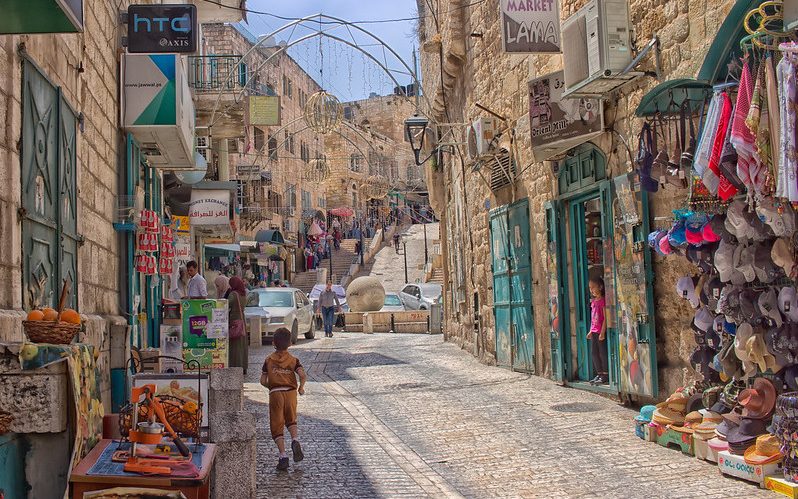

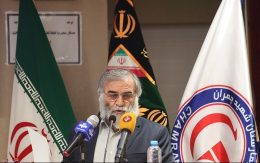
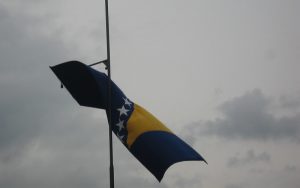

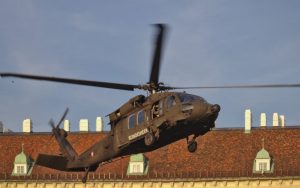
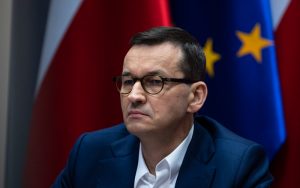

Be First to Comment